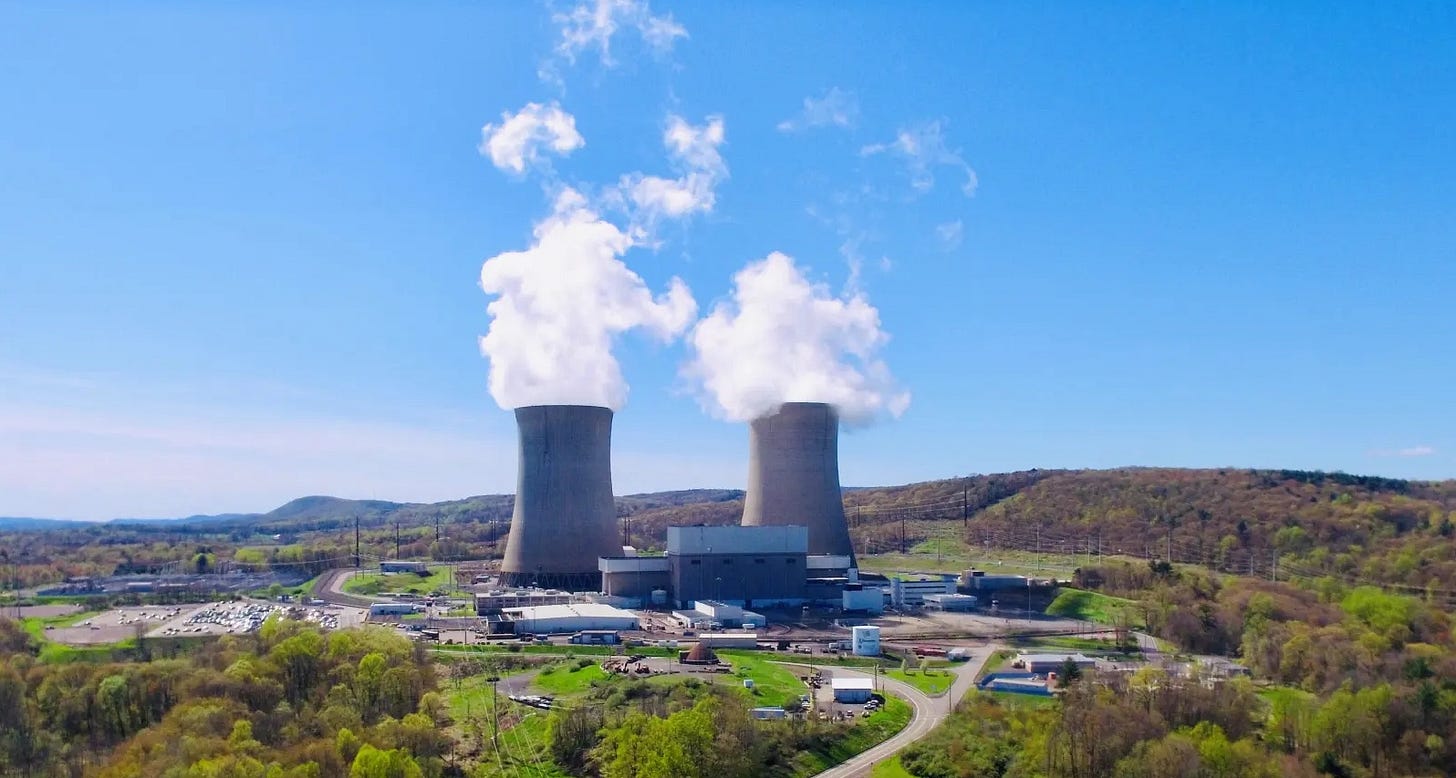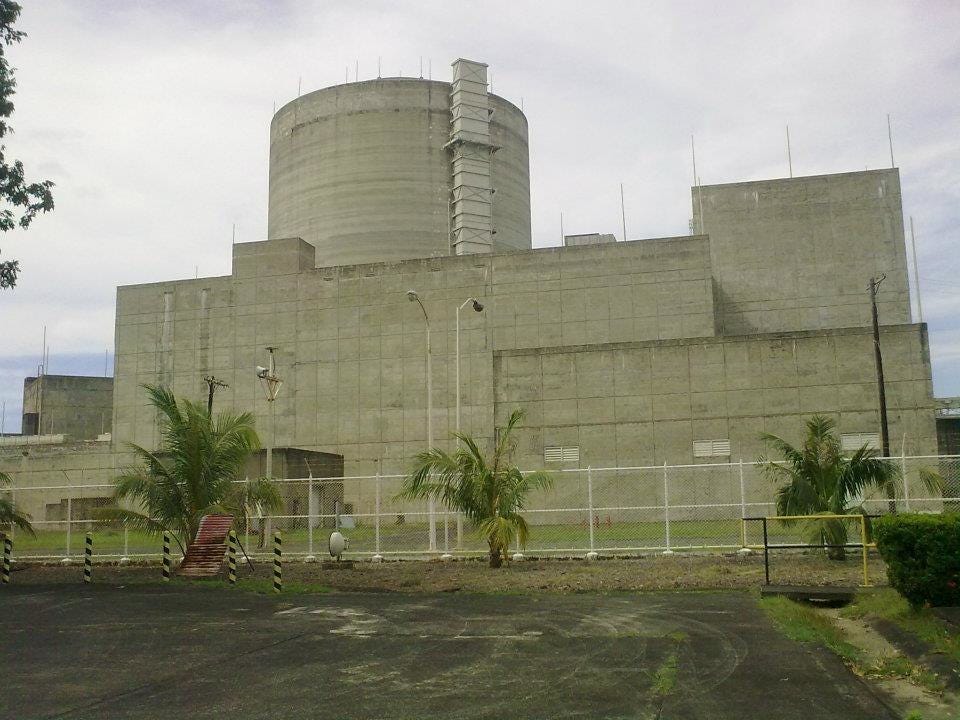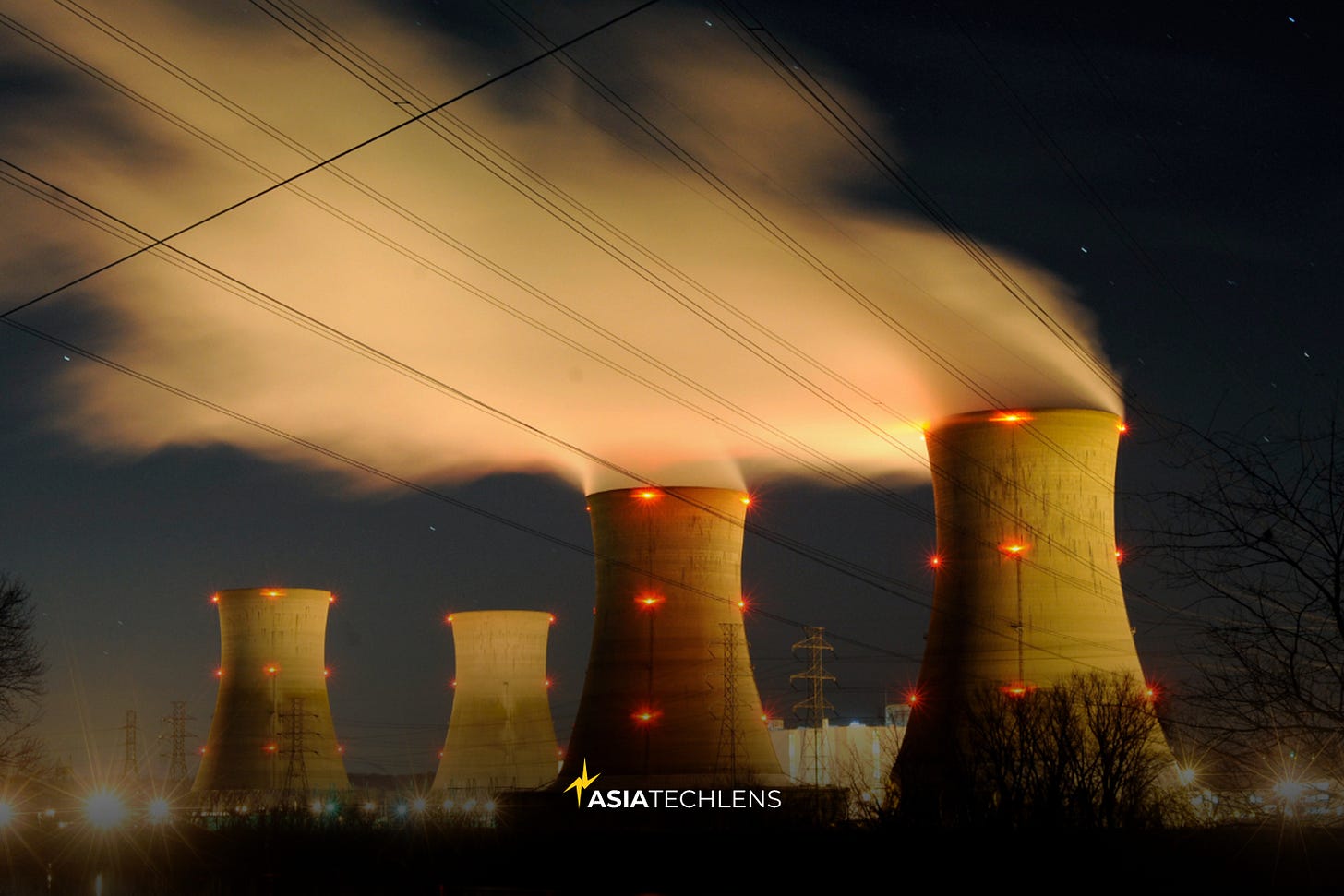Can Nuclear Power Fuel Southeast Asia’s AI Boom?
AI is outgrowing Southeast Asia’s grid. Nuclear can close the gap, but only if governments move faster than reactors can be built
Singapore’s data centres are approaching full capacity, and regulators warn that supply may soon fall behind. In Jakarta, proposals for hyperscale campuses are multiplying, even as utility planners warn of grid limitations. Across Southeast Asia, the AI boom is running headlong into a constraint that chips and GPUs can’t solve: power supply and reliability.
Into that gap steps an unlikely contender: nuclear energy. Long shadowed by Chernobyl and Fukushima, nuclear power is being recast as a carbon-free, 24/7 power source. Its newest form, small modular reactors (SMRs), is compact and potentially more deployable than the gigawatt-scale plants of old. U.S. hyperscalers have already started locking nuclear in through long-term power purchase agreements (PPAs), ensuring price and supply. Southeast Asia may copy that playbook, but scaling by 2030 requires credible regulators, clear liability rules, guaranteed offtake, vendor financing, and execution roadmaps. The question is whether local governments can move faster than nuclear’s famously slow build times.
Why Nuclear, Why Now
The International Energy Agency (IEA) projects global data center demand will more than double to 945 TWh by 2030, with Southeast Asia nearly doubling from 2024 levels. Training and running large AI models consumes vast electricity, and nuclear’s reliability makes it attractive: U.S. reactors run at 92% capacity factors, far above intermittent renewables.
One gigawatt-scale reactor can power a hyperscale AI campus with near-zero emissions, which aligns with tech firms’ climate pledges while giving investors price stability.
The U.S. Playbook
Hyperscalers are not waiting:
AWS–Talen Energy: 1.92 GW PPA at the Susquehanna plant, ramping supply through the 2030s.
Microsoft–Constellation: 20-year PPA reviving Three Mile Island Unit 1, first power by 2028.
Meta–Constellation: 20-year, 1,121 MW PPA from the Clinton Clean Energy Center starting 2027.
These structured PPAs de-risk both price and volume, enabling tech firms to invest in clean power projects and lock in the output to meet their data center needs. These deals work because regulators, liability frameworks, and bankable offtakers minimize risks: three ingredients Southeast Asia will need to replicate.

Southeast Asia: Who’s Really Moving?
While Asia Pacific PPA markets are nascent and regulations complex, AI-driven nuclear discussions are gaining momentum in Southeast Asia:
Front-runners
Philippines: Law and load aligned. Meralco and EDF are exploring nuclear deployment; independent regulator PhilATOM (the Philippine Atomic Energy Regulatory Authority) is already in place, a major boost for bankability.
Vietnam: Policy thaw underway. A January Hanoi–Moscow deal revives nuclear plans; Decree 57/2025 enables direct power purchase agreements (DPPAs), letting private generators sell directly to hyperscalers. A 4 GW target by 2031 could power dozens of AI campuses, if politics stay steady.
Middle ground
Singapore: Land-scarce but nuclear-curious. A U.S.–Singapore civil nuclear pact is signed. The Energy Market Authority quietly commissioned Mott MacDonald in September to study SMRs for AI-driven load.
Malaysia: A July U.S.–Malaysia civil nuclear MoU gives U.S. tech access. Aligns neatly with hyperscale builds in Kuala Lumpur and Johor, where power shortfalls are already slowing growth.
Beyond the front-runners and mid-tier players, others are only just dipping a toe in.
Early movers / exploratory
Thailand: Electricity Generating Authority of Thailand (EGAT) signed an MoU with Korea Hydro & Nuclear Power for SMR feasibility; discussions ongoing with China’s CNNC Overseas. Still far from execution.
Indonesia: Regulator approved ThorCon’s site evaluation for a molten-salt reactor on Kelasa Island, Bangka Belitung. Symbolic but at an early stage.
Together, these projects sketch a patchwork of ambition - some governments serious, others exploratory - but all face the same structural barriers.

Barriers That Matter
The International Atomic Energy Agency (IAEA) milestones for nuclear newcomers are clear:
Governance: Projects must be licensable and insurable via independent safety regulators and globally aligned liability regimes. The Philippines’ PhilATOM is a model; hyperscalers and lenders rely on this.
Commercials: Contractable, financeable deals require direct offtake and vendor/multilateral bank support. Vietnam’s DPPA framework, allowing generator-to-user sales, is adaptable for nuclear.
Social License: Ongoing transparency, consultations, and dialogue are critical, per the IAEA, to address public concerns.
Regional Collaboration: As George Borovas, head of nuclear at Hunton Andrews Kurth, notes in a webinar, clear licensing, defined safety roles, and integration with data center planning are essential. ASEAN could, in theory, follow the EU model, but history shows delays are common, as Vietnam’s stalled program demonstrates.
The reactors themselves aren’t the hard part: governance, financing, and public trust are. Beyond challenges like seismic risks, the economics are also daunting: SMRs can cost US$5,000 per kW, more expensive than renewables or gas. That points toward hybrid systems (e.g., nuclear + solar + storage) to balance reliability and cost.
Southeast Asia's nuclear ambitions will require US$208 billion of investments to develop 25GW of capacity by 2050, with SMR emerging as the preferred technology despite significantly higher costs, according to the latest Wood Mackenzie analysis.
Other potential concerns, like seismic risks in Indonesia and the Philippines, demand pricy designs, while unresolved nuclear waste issues may clash with tech firms’ green goals. Public fears, weak grids, and nascent regulators add risks of delays and geopolitical snags. For nuclear power to contribute to the region’s AI boom, governments must navigate these skillfully.
What’s at Stake
AI campuses don’t just bring servers, they bring billions in foreign direct investment, high-value jobs, and long-term tech gravity. If Manila secures the first nuclear-backed AI hub, it could tilt the region’s digital map overnight. If Singapore finds a credible SMR path, it could prove that even city-states can host energy-hungry AI clusters. Vietnam has 4 GW ambition by 2031, and it is just the starting gun, not the finish line.
But the clock is ticking. The U.S. already has over 5 GW of nuclear contracted to hyperscalers.
For Southeast Asia, the race isn’t just about GPUs or subsea cables. It’s about megawatts. Without credible nuclear, the region risks losing the AI boom before it really begins.
The Bottom Line
Nuclear suits AI’s demand for firm, green megawatts at scale. But policy will decide the outcome. Unless regulators, financiers, and governments align faster than reactors can be built, Southeast Asia risks ceding the next wave of AI campuses to markets that already have nuclear in the mix.
In the end, the region’s AI ambitions may depend less on who designs the best models, and more on who can turn on the lights.
For More Info on Asia Tech Lens


